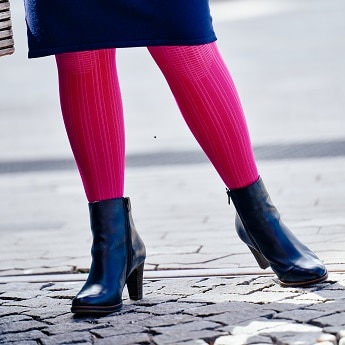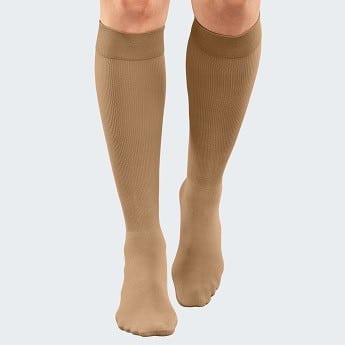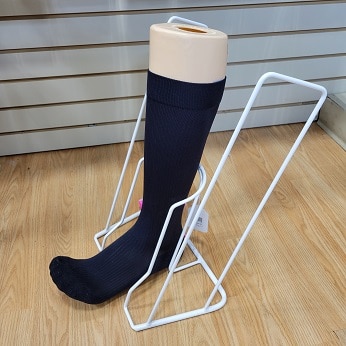
Daily washing will help restore and retain elastic properties as well as remove perspiration, oils, dirt, bacteria and dead skin that accumulate inside the garment. Frequent washing will not harm the garments if done properly.
Machine or hand-wash?
- Compression garments may be machine or hand washed, depending on the preference of the user.
- If using the washer, place the garments in a mesh laundry bag to prevent snagging and to keep smaller items from being lost. Always use the gentle cycle and never use hot water. The water temperature should be cool to lukewarm.
- If hand washing the compression garment use cool water when washing and rinsing. Do not overly agitate or stretch the pieces and never wring. Remove the excess water by gently rolling the garment in a dry towel to remove as much water as possible.
- It is best to have two sets of compression garments so that the fibers have time to relax and regain their shape before the next wearing. This will help your garments last longer.
What detergents to use?
- Most garment manufactures offer garment washing solution, which are formulated to remove oil, body acids, and skin salts quickly and easily without damaging the fabric. Using these specially-designed solutions is recommended and will help extend the life of the compression garment.
- Harsh detergent can destroy the thin fibers of compression garments. Mild soaps or detergents should be used, free of bleach, chlorine, fabric softeners or other laundry additives. Never use chlorine bleach on spandex as the fibers will be destroyed.
How should garments be dried?
- Compression pieces and clothes should always be air dried. Excessive heat exposure may weaken or even damage the elastic fibers of the garments. Whether garments are hung or laid flat to dry, exposure to direct sunlight or direct heat sources like a radiator should be avoided and the garment should be turned inside out.
- It is recommended to place a towel on a drying rack and lay the garment on top to dry. Hanging the garment directly on a rack or pole to drip dry can allow the weight of the water to stretch the item causing it to fit improperly.
How to clean the silicone top bands on knee and thigh highs
- Soap and oils can build-up on silicone-top bands making them less effective, even with proper washing.
- Use a cotton ball and a little alcohol, or an alcohol swab to remove soap residue.



